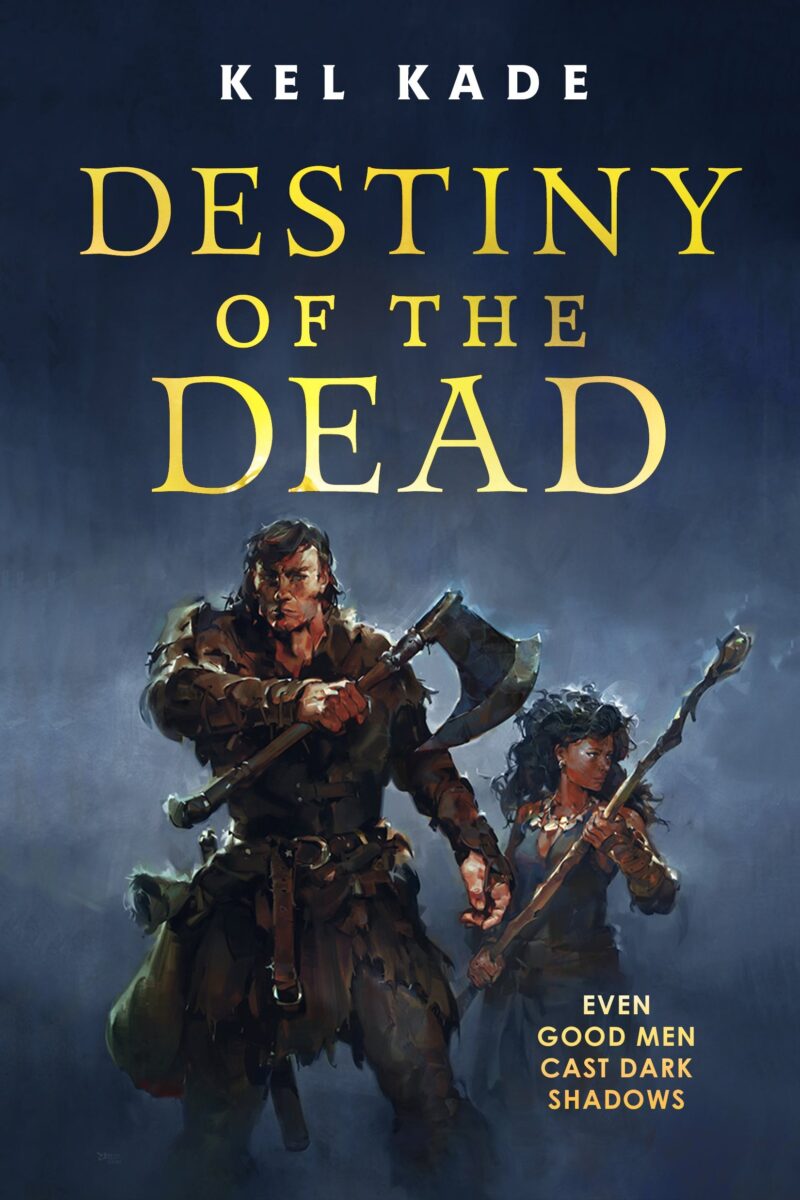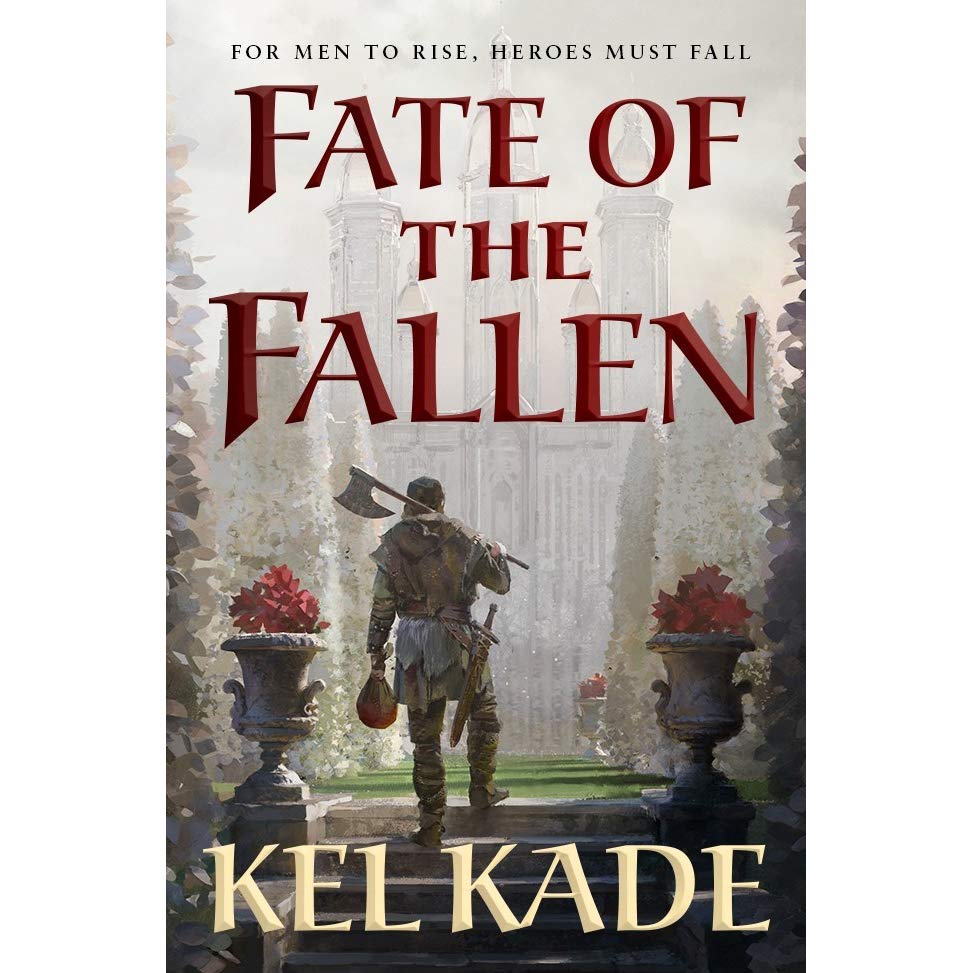Before Fate of the Fallen by Kel Kade, it had been a while since both an inciting event and an ending took me by such a surprise. Though they were well done, making total sense within the story while being utterly shocking, one cannot lean on those types of moments without getting diminishing returns. Luckily, the first book was filled with vibrant and complex characters that continue into the follow-up, Destiny for the Dead, and live up to what the first book set up.
Aaslo, the Forester of Goldenwood, remains the same grouch and skeptic with compassion for his fellow man he doesn’t always let others see as he did in the first book but now has new powers to play with in his quest to take on his best friend’s burden as the chosen one meant to save their world from its end. The power revealed at the end of the last book was that Aaslo now has the ability to raise the dead. Now with a fellowship of his own with him, the forester begins to explore the limits of this power while on a quest to destroy the evergates, the portals in which the enemy magi can use to invade Aldrea.
Destiny of the Dead isn’t Aaslo’s story alone. Myropa, the reaper of souls who like many others in the first book believes Axus’s victory with the destruction of all life on Aldrea has found new confidence in this book. Because Aaslo and Mory can now interact with her they appear to have a positive effect on her making her more than just a witness to Aaslo’s actions and the god’s meetings but an active participant. While all that is happening there is increased tension between the gods over what is happening in Aldrea and Aaslo’s actions. I have a weakness for stories involving gods, mortals, and how the two interact. More and more, a conflict is growing between the gods in no small part due to Aaslo’s actions. Myropa serves as our eyes to this pantheon of gods and how they manipulate each other and Aldrea through the use of the reaper.

Cherrí, a new character in the series, serves as a foil to Aaslo in this book. She has no idea about the prophecies, only that monsters and magi have destroyed her clan and all the migrating clans of Aldrea. While Aaslo lives for hope and thus was gifted with the power to raise the dead Cherrí only lives for revenge and thus has been given power over fire as a Paladin of Everon, the Fire Serpent. With her story, we are at the point of the prophecies where it’s gone from the near future to the present and it takes a dark turn rather quickly. Through Cherrí, a quest for revenge can be as compelling as a quest for hope but may not always end as happily. Her story may hint at this series being overall more of a tragedy than the triumph of an unexpected hero.
The supposedly inevitable fate of the world dangles over the story like a dagger hanging from a thin bit of twine. If you’ve read my reviews before you’d know I love a framework device and the Shroud of Prophecy has its owns, a storyteller telling Aaslo’s story, presumably from a future that refers to what Aaslo is doing as the Grave War, a war that is supposed to be over. This framework and the prophecies that say Axus will win, and Ijen, the prophet accompanying Aaslo who has written prophecies specific to the forester’s journey all have this feeling of intrigue about what is going to happen.

A lot of the turmoil facing Aaslo is emotional ones from outside forces. The head of Mathias acts as the embodiment of negative self-talk, the sources of his new magical power pushing their way through his subconscious while he tries to get control of it, and Ijen the prophet constantly informs him that no matter what Aaslo does it will end in death for all of Aldrea. Ijen, who was introduced late in the first book, is a source of frustration. I, as a reader, want Aaslo to succeed and Ijen comes to embody the dread of that not happening. On top of his constant reminders the future cannot be changed is his refusal to use his tools of prophecy to enact that change. He is more of the antithesis to hope of a happy ending than the antagonists of the book. His refusal to be a participant, his indifference, and his inaction make moments when his prophecies go off the rail gleeful to read his confusion and frustration.
Despite these continuous challenges to Aaslo’s motivation, in Destiny of the Dead the forester’s strength of character and quite frankly, stubbornness, to not give in to doubt encourages those reading to believe he’ll succeed. Through the storyteller and the prophecies, Kel Kade plays with her audience by asking what if it doesn’t end happily ever after all and never was. That conflict of which way it’s going to go is part of the fun of The Shroud of Prophecy series.
Check out the review of the first book Fate of the Fallen
Check out No Page Unturned, a book podcast featuring this reviewer on the Geeklyinc network
Joshua was provided an advance copy of the book by Tor books.
If you liked this review, please consider buying the reviewer a coffee.
Follow Joshua MacDougall @FourofFiveWits on Twitter.
